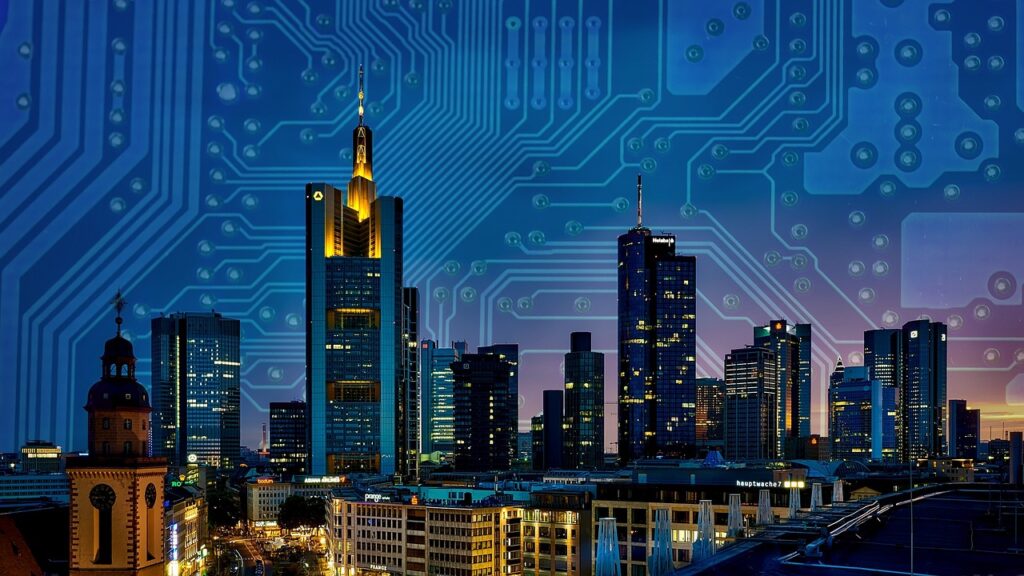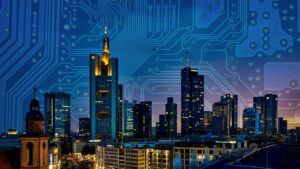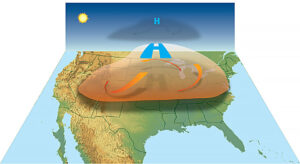With regard to the telecom company that just offered to turn Kiefer into a “smart city,” we know a lot of people will be asking, “What is that?”
The “Smart City” is a concept based upon the Internet of Things, or IoT. So, what is the IoT?
The IoT is a network of digital devices all connected to the internet, collecting and sharing data. Even people and animals are part of IoT, and each person or machine is given a Unique identifier (UID), thus allowing data to be transferred without human interaction.
Some real-life applications would be a heart patient who has a monitor implanted in his or her body, domestic or farm animals with transponder implants, or a home thermostat that can be controlled by a smartphone. Autonomous (self-driving) vehicles are examples of IoT. Each of these devices are assigned an Internet Protocol (IP) address.
An IoT system is made up of Internet-enabled devices that use microprocessors, sensors, transducers, IO (Input Output) circuitry, and communication hardware, all driven by specific software. The goal is to collect and send data, and perform tasks based on that data.
IoT objects, whether they be animals or machines, typically share gathered information by connecting to an internet gateway. This data is either sent to the Cloud for analysis or analyzed locally. IoT Devices can also communicate with each other and act on the collected data.
Thanks to the emergence of cheap computer chips, and the proliferation of wireless networks, it is now possible to turn any device, large or small, into a “smart” device.
The Internet of Things now utilizes AI (Artificial Intelligence) to speed up data collection and data sharing between devices and make them more responsive to dynamic situations.
The next step in the evolution of IoT is the “Smart City.”
A smart city may simply be described as a city with a vast array of sensors to collect data on its people and its infrastructure in order to improve efficiency of services.
The idea of a smart city has been around for over half a century, however in the past decade, quantum leaps technology has made it possible for a city to be considered a large computer network communicating internally and externally via the internet.
What makes a city smart?
There are some metrics by which to determine if a city is “smart.” using interconnected digital devices to monitor and manage its infrastructure, using IoT to help improve the local environment, utilizing connective technology to implement urban planning that optimizes the use of spaces, human and mechanical resources, and energy consumption, Using IoT, and digital technology to make public transportation and traffic flow more efficient, and perhaps the most important result for residents, improve the local citizens’ quality of life.
Transportation systems are one aspect of a smart city.
For example, a smart city could put into place a system to manage traffic flow. This system would have a control center that controls traffic lights, using sensors to detect problems in traffic flow. The system would change the timing of traffic lights based on data collected by the sensors.
Along with traffic flow, street lighting is essential to traffic safety. Streetlights could be part of the network to improve energy efficiency and provide notification of failures.
We already have smart toll roads. Oklahoma’s Plate Pay is an example. Your license plate is scanned when you go past a sensor, and you are sent a bill.
In the near future, cities could control publicly-operated self-driving vehicles. These vehicles would be able to communicate with one another to provide improved traffic safety.
Theoretically, privately-operated autonomous vehicles could be controlled, thus allowing the driver and occupants to do other tasks while going to work.
Energy Use
Electricity grids strive to efficiently provide sufficient power when needed and minimize damage and restore power as quickly as possible due to equipment failure.
The Smart Meter is one way to achieve this. A human is not needed to read it, and real-time data can provide necessary information to identify and track outages.
In addition, the electric company can control electricity at a home or business. This means no one has to come to the location to turn on or turn off service. Individuals may use smart meters to monitor their peak use and let the power company adjust a smart thermostat during peak hours to brain a cheaper rate during those hours.
Some utility companies have put forward the use of microgrids. These are a cluster of ;roads and sources that are usually connected to the overall power grid, but can disconnect and operate independently. Microgrids could not only be backups in the case of power failure in the main grid, but provide increased operating efficiency.
Crime and Public Safety
Cities around the world are placing cameras at nearly every intersection, in an effort to prevent crime and in the event of a crime or an act of terrorism, identify the perpetrators.
License plate scanners are being installed in communities in effort to track down someone who is missing or has committed a criminal act. State and local governments are using them to track various violators.
In summation, smart cities provide many advantages for their citizens including widespread access to Wi-Fi, improved traffic conditions, less crime, and lower energy bills.
More importantly, scientists postulate that one of the most important roles of smart cities will be the reduction of greenhouse emissions such as carbon dioxide, through the use of AI and connective technology.











